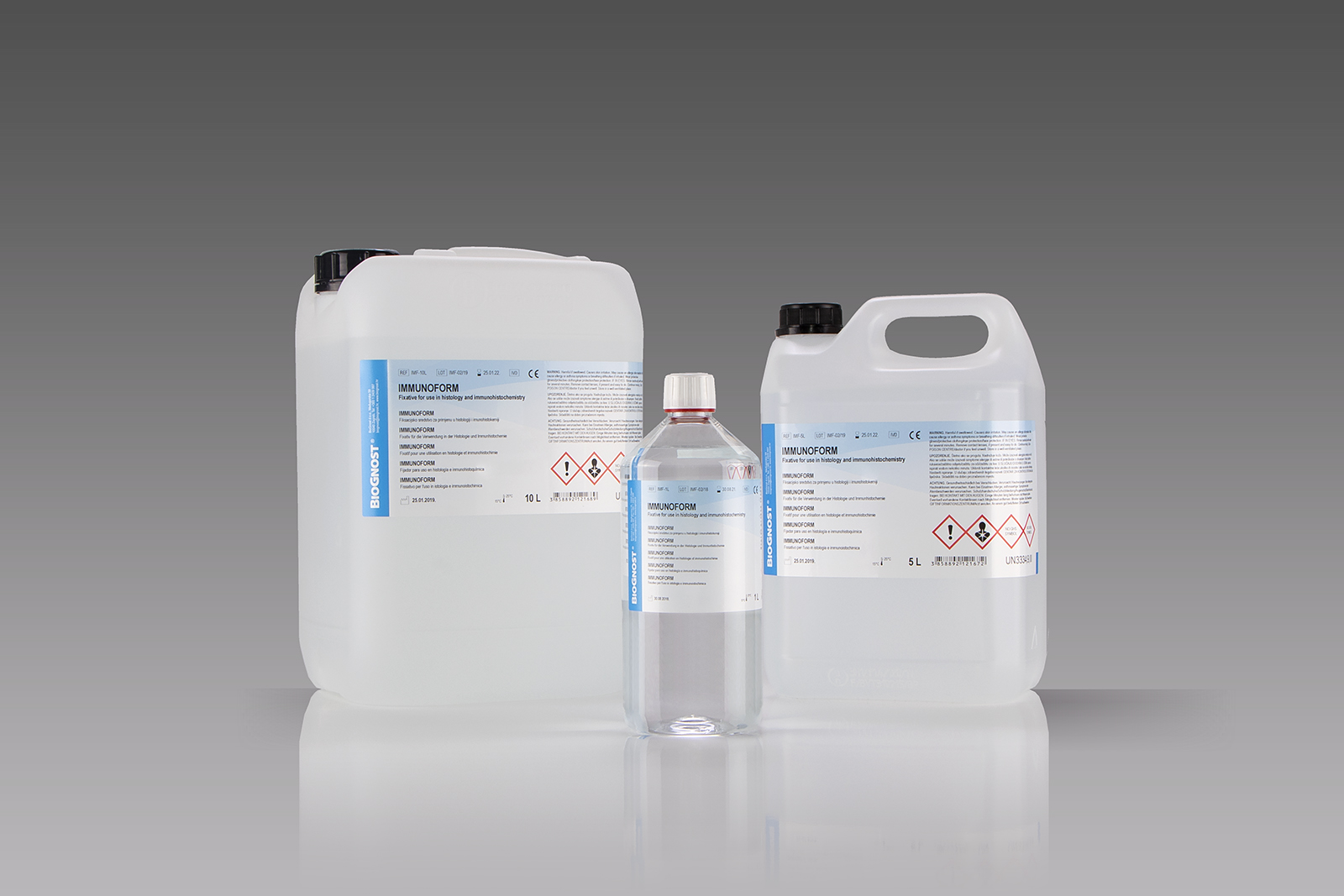Introduction
An impeccable sample fixation is a prerequisite for a correct histological diagnosis. Tissue samples must be immersed in an optimally chosen fixative immediately after sampling, because a timely fixation will prevent autolysis, putrefaction and other unwanted cellular changes. Although there are hundreds of histological fixatives and at least tens of formaldehyde-based fixatives, neutral buffered formaldehyde solutions with a concentration range from 4% to 10% are the most commonly used fixatives, primarily because of their simple and universal application.
ImmunoForm is a fixative produced by melting paraformaldehyde in buffer solution, without added methyl alcohol. The final formaldehyde concentration is 4% (10% formalin solution), and advantage in using paraformaldehyde is higher oxidation stability and creates 10 times lesser amount of formic acid, chemical responsible for formalin pigment.
Tissue fixation using a buffered formaldehyde solution results in forming cross-links, i. e. it forms methylene bridges between proteins, that is, it results in keeping tissue components in their in vivo relation. If fixated properly, the tissue sample can withstand additional histological tissue processing and staining. It is suitable for fixating bioptic materials, smaller tissue samples and long-term fixated samples storing. Optimal molarity phosphate buffer (0.05 M) is used for securing permanent pH range between 6.90 and 7.1 at 25°C. It is suitable for usage in all automated devices for tissue processing, as well as for manual histological techniques. It is conveniently packaged in 1 liter bottles, 5 and 10 liter canisters.


